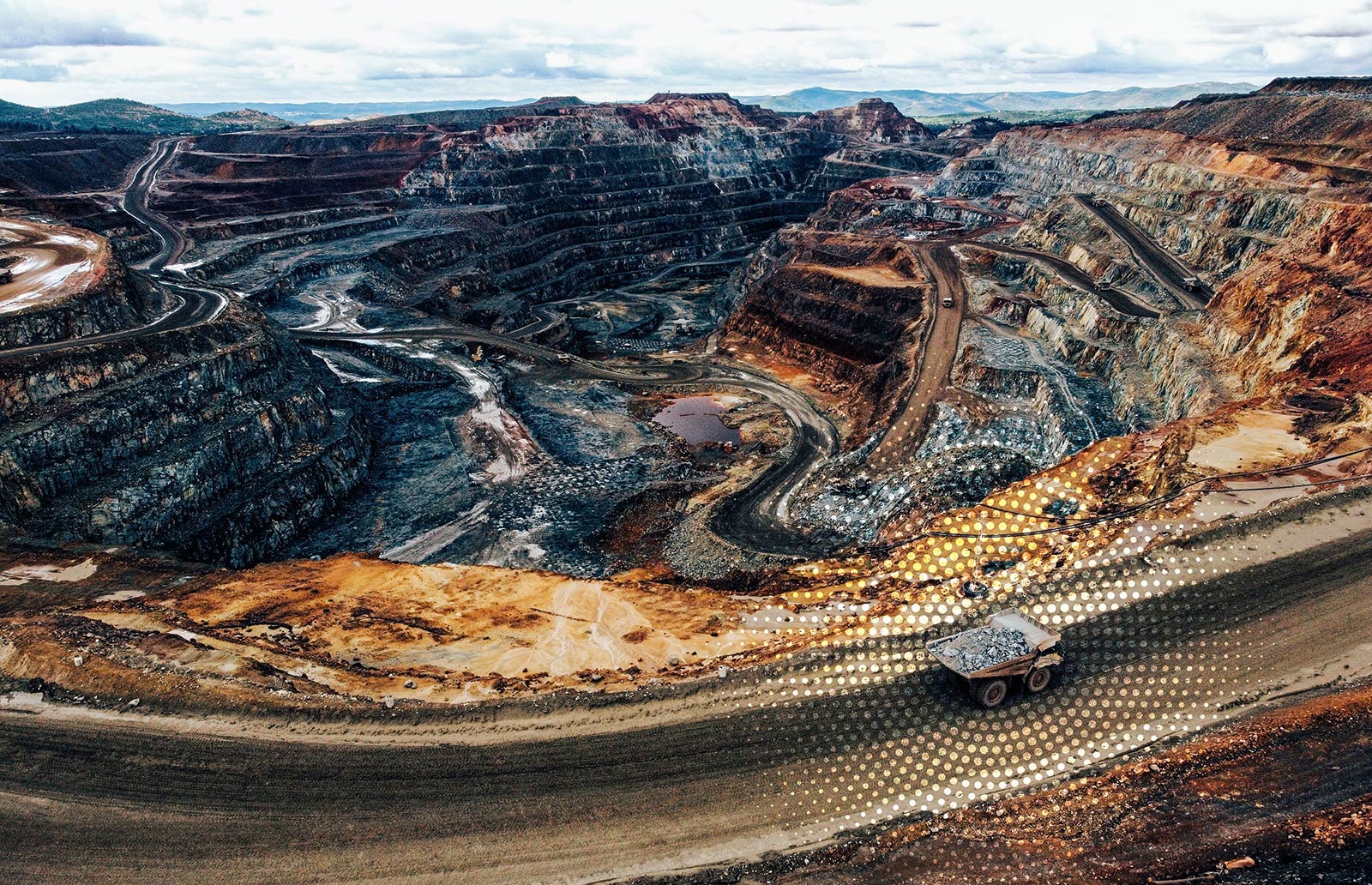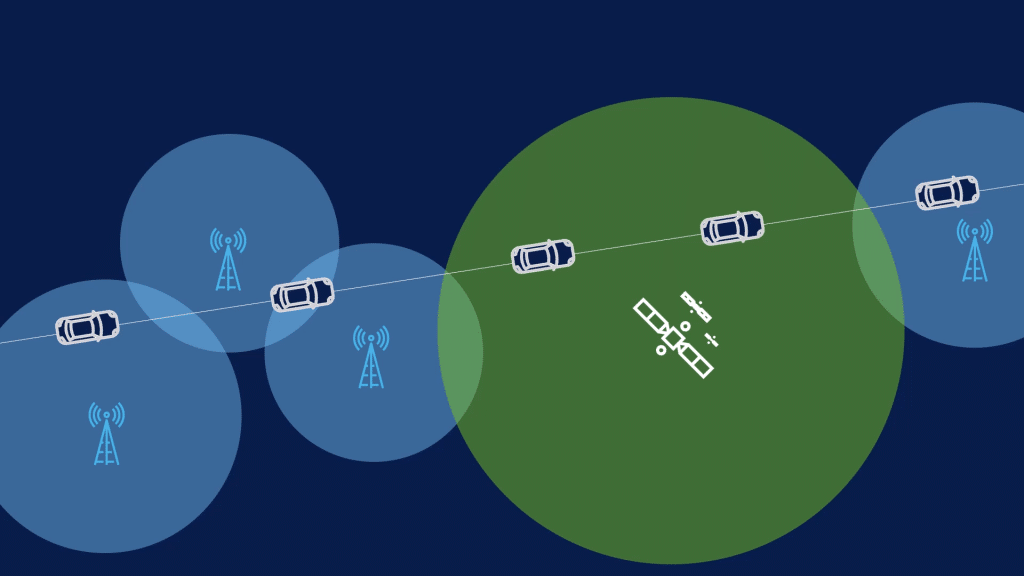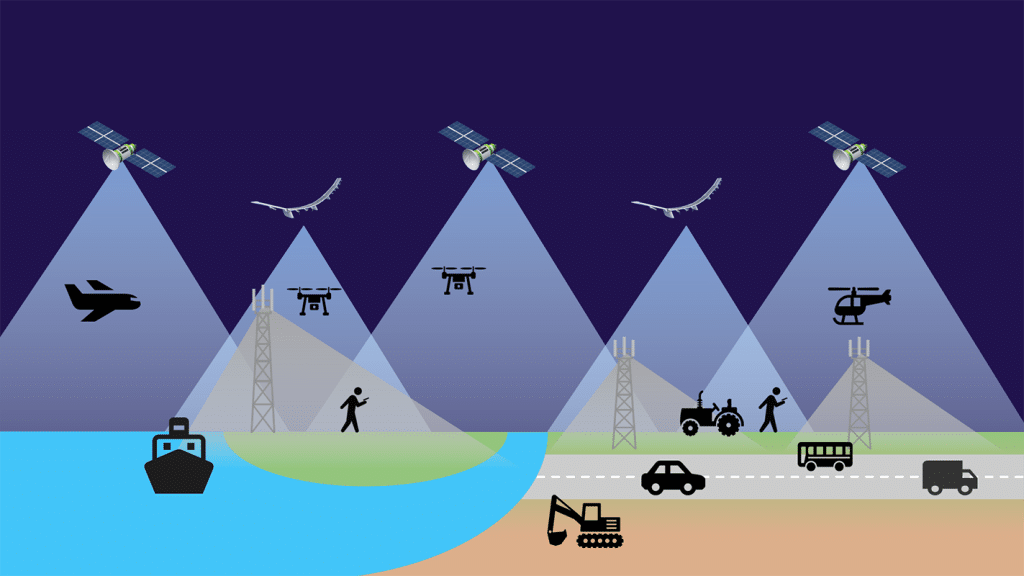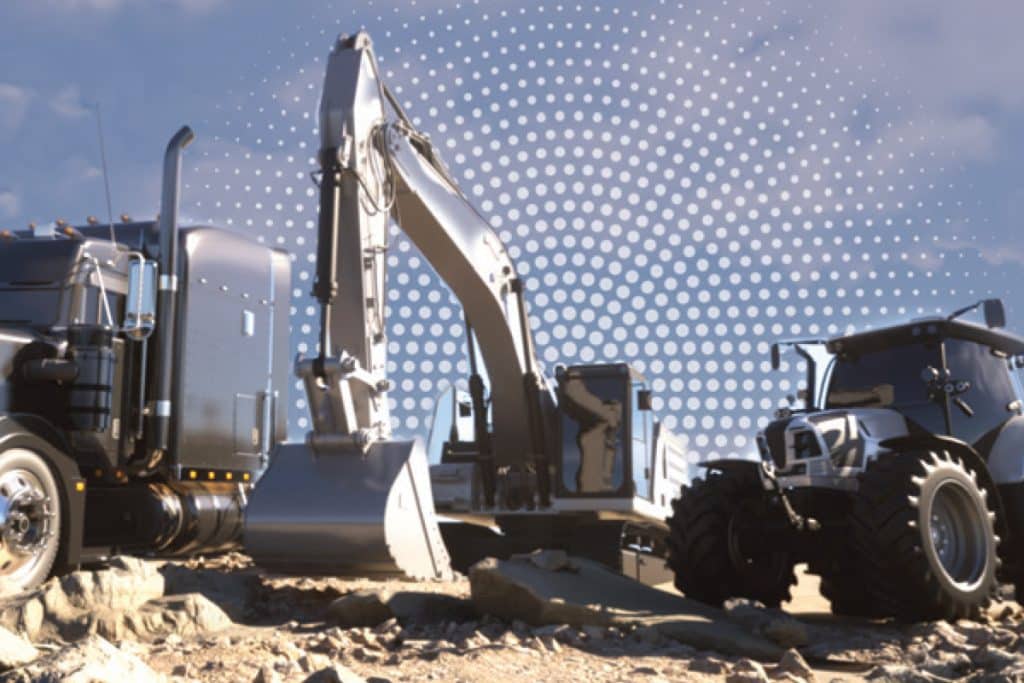Multi-Orbit Satellite Connectivity Accelerating Digitalization and Optimizing Performance in the Mining Industry
Todd Cotts, Senior Product Marketing Manager, Mobility & Government
Read time: 3 minutes
The mining industry remains in the throes of a digital transformation. With increased frequency, mining owners and operators continue to adopt and deploy new technologies and connected applications to enhance productivity, reduce costs, improve workplace safety, comply with always-emerging regulatory requirements, and overcome rampant labor shortages using remote control and autonomous operations.
Mining Industry Challenges
Mining organizations are turning to technology and connectivity solutions to address and overcome several key industry challenges which include the following:
Overwhelming Demand
The global need for the earth minerals extracted by mining companies continues to rise. Benchmark Mineral Intelligence projects that 384 new mines will be needed just to meet demand for materials to manufacture batteries for electric vehicles, smartphones, solar panels, and wind turbines. To meet expanding demand, existing mines will need to operate with maximum productivity and efficiency, while new mine site exploration will need to happen with greater speed and expediency.
Widespread Labor Shortages
A wide range of heavy industries continue to struggle with labor shortages, and mining is no exception. According to the Society for Mining, Metallurgy & Exploration, more than half of the U.S. mining workforce is aging and expected to retire by 2029. Candidates for replacements are in short supply, with mining employment having fallen by more than 20% over the past decade in the U.S. The lack of talent and migration of workers to new industries has dramatically impacted the ability of mining companies to recruit and retain talent, making the need to leverage autonomous and remote control solutions all the more urgent.
Expanding Regulatory Pressures
The World Economic Forum estimates that heavy industries are responsible for nearly one-third of the world’s carbon emissions. The mining industry alone is believed to be responsible for nearly 10 percent of global greenhouse gas emissions. As governments and regulatory bodies continue introducing additional requirements to curb environmentally harmful practices across all industries, mining owners and operators are challenged to achieve compliance and avoid costly financial penalties.
Pervasive Safety Concerns
Worker safety is always a pervasive and dominant issue in an inherently dangerous business. According to UN reports, heavy industries like mining, construction, and transportation account for a high percentage of the 2.78 million occupational deaths each year. The U.S. Bureau of Labor Statistics reports that mining ranks highest in fatal work injury rates. Despite advances in technology and workplace practices and training, mining fatalities still saw a 31% increase in 2023.
Benefits of Satellite Connectivity
In response to these and other challenges, and in an effort to remain competitive, mining companies are turning to digital technologies and solutions that can connect people and assets, capture and transmit data, and improve the sustainability and safety of operations. At the same time, mining equipment manufacturers are embedding fleet connectivity capabilities into heavy mining equipment to support telematics, vehicle monitoring, IoT strategies, automation processes, and remote-control operations.
The increased presence of digital applications and connected solutions, as well as the requirements to capture and transit data in real-time, are driving demand for robust, ubiquitous connectivity at all times and in all locations.
According to ABI Research, heavy industries that leverage 5G for connectivity solutions in their workplace environments experience a significant lift in operational performance, worker productivity, reductions in costs, and enhanced efficiencies across all aspects of the business. As the era of digitalization progresses in the mining industry, the significance of having access to reliable connectivity will become a critical, non-negotiable requirement.
However, 5G coverage is typically only available in populated urban and suburban areas, where mines are rarely to be found. To ensure mining operators can enjoy these same benefits of connectivity in rural and remote locations, addressing and closing gaps in terrestrial coverage is vital. Reliable connectivity must be available in the remote locations where many mines are typically situated, often outside the footprint of terrestrial and cellular reach. For this reason, satellite-powered communications must be part of any mining operators’ communications solution suite.
Satellite-powered connectivity solutions are more powerful, resilient, reliable, cost-effective, and accessible than ever before, offering mine owners and operators an ever-broadening range of benefits and value that include the following:
Enhanced Flexibility
Satellite network solutions offer a degree of flexibility unmatched by cellular, fiber, or the Low Power Wide Area Network technologies that have typically powered connectivity at mining sites. Maintenance of these legacy networks is complex, requiring ongoing investments in new infrastructure as connectivity needs and locations change. With an expansive and unhindered view of the planet, satellites can provide the expanded coverage mining companies need to power mobile applications and connected equipment as conditions change on the ground, as new applications are introduced, and as communications requirements emerge.
A Primary or Redundant Solution
Satellite solutions can serve as either a primary or redundant source of connectivity for mining users. It can play a critical role in delivering enhanced communication redundancy and expanding the reach of terrestrial networks to ensure that cellular-connected heavy equipment are able to continue operating anywhere on the worksite that might be situated outside the wireless network coverage footprint.
Global Reach
When connectivity-on-the-move is needed to power the critical mobile applications that enable miners to have the situational awareness they crave, the capabilities of satellites to provide coverage across the vastness of the Earth make it the ideal connectivity solution. It is the continuous coverage by satellites, accessible simply by having line of sight to the sky, that makes telematics, predictive maintenance, as well as autonomous and remote operations possible.
Meeting Speed and Latency Needs
The advent of multi-orbit satellite connectivity is poised to further deepen the inherent value of satellite connectivity for mining owners and operators. By combining the breadth, reliability, and global coverage offered by geostationary satellite constellations with the low latency capabilities of low Earth orbit constellations, satellite solutions can meet the performance standards demanded by data– hungry applications in use across the mining industry. Multi-orbit high-throughput connectivity solutions ultimately deliver the speed, coverage, and latency that allow mining companies to maximize investments in connected equipment and real-time data applications.
Lower Total Cost of Ownership
Satellite connected solutions once suffered from negative perceptions related to cost and complexity, some of which were justified. Today, mining operators and heavy equipment manufacturers can leverage the power of satellites to digitally transform their operations and generate new streams of revenue from machinery-as-a-service models at highly competitive cost points. Furthermore, the costs of deploying satellite solutions are now favorable compared to 5G, which requires significant capital investment for small cell base stations, spectrum licenses, terminals, fiber connections, and a range of other fees that drive OPEX. ABI Research estimates that, over a five-year period, the costs for deploying a multi-orbit HTS satellite solution at a mining site would be lower by 67%.
Achieving Sustainability Goals
As mining companies continue to face increased pressure to meet carbon neutrality goals, satellite powered connectivity solutions can power the applications that help mining operators decarbonize, reduce greenhouse gas emissions, achieve sustainability goals, and remain in compliance with the always emerging regulations that vary by country, state, county, and province. Satellite connectivity powers applications that can be used to optimize routing and travel of heavy vehicle equipment, reducing idle times, fuel consumption, and energy usage. Miners can more easily access real-time telematics data to monitor performance of equipment, all of which can lead to more efficient operations that dramatically reduce carbon and greenhouse gas outputs.
Connectivity Solutions for Mining Operations
Among today’s satellite connectivity solutions available to mining owners and operators, Intelsat’s portfolio of FlexMove services stands out in being able to meet the unique and evolving needs of the mining industry.
FlexMove, Intelsat’s flagship managed service for high-throughput connectivity for communications-on-the-move (COTM) and communications-on-the-pause (COTP) applications, delivers flexible, enterprise-grade satellite connectivity that keeps crews reliably connected to company networks and the cloud anywhere, even in the most remote locations. FlexMove powers COTM connectivity for trains transporting mining product from the site to the next destination and within on-site offices and provides portable, backpack friendly COTP solutions for temporary fixed use in remote field operations.
FlexMove Fleet is Intelsat’s advanced high-throughput fleet connectivity solution for heavy equipment as well as on and off-road mining transport vehicles. Accessible via a lightweight, flat-panel, all-in-one antenna that affixes quickly to mining vehicles, FlexMove Fleet gives mining companies the ability to remotely monitor and manage heavy equipment fleets in a single or across multiple locations, no matter how remote.
FlexMove LEO leverages the OneWeb LEO network and LEO-only and multi-orbit antenna systems to provide mining companies an additional end-to-end solution for COTM and COTP applications requiring higher speeds up to 100 Mbps download and latency of 70 milliseconds or lower. The combination of Intelsat’s own geostationary orbit (GEO) satellites and low-Earth orbit (LEO) network technologies from Intelsat’s strategic partner, Eutelsat OneWeb, powers the autonomous and remote-control applications that require higher speeds and low latency.
Mining companies face a multitude of challenges today, from overwhelming demand and widespread labor shortages, to expanding regulatory pressures and pervasive safety concerns. Together with Intelsat, mining companies can successfully surmount these challenges by accessing enterprise-grade satellite connectivity to power effective remote operations, ensuring crews are always connected to company networks and one another even when and where terrestrial-based connectivity is unreliable or unavailable.
Contact our solution experts to learn more.






















